Are you looking to add an ecommerce payment gateway to your business tools for growth? You’re on the right track!
The global payment gateway market is predicted to grow by 22.1% compound annual growth rate (CAGR) from 2024 to 2030, and it is estimated to reach USD 132.24 billion by 2030.
Technology has been the main driver of transformative growth in the payment space, sweeping through the conventional ways of using cash, checks, and credit cards and ushering in a new era of e-wallets, one-click online payment systems, and even cryptocurrencies.
In the global ecommerce market, too, it is expected that by 2024, a fifth (21.2%) of all retail sales will happen online, with the ecommerce penetration rate reaching 25% by 2027.
Mobile shopping or M-commerce, social commerce, and cross-border e-commerce are leading the way. New, contactless payment methods such as mobile wallets, QR codes, cryptocurrencies, and debit cards are paving the digital commerce highways.
Ecommerce payment gateways help both businesses and consumers by simplifying and speeding up payment processes. With easier and faster payments, consumers are encouraged to shop more, businesses grow faster, and economies build robustness. Ecommerce payment gateways are now the cash registers of the digital world.
However, to be truly useful, ecommerce payment gateways must not only be convenient but also secure, among several important considerations.
It is critical for you to understand what ecommerce payment gateways are and how they work, what their benefits and limitations are, and how to choose the best gateway for your business.
This guide takes you through all these so that you’ll be in the best position to decide when you finally select the best ecommerce payment gateway for your enterprise. To help you further with your choice, we end this guide with our recommendations for the 10 best e-commerce payment gateways.
What are Payment Gateways in Ecommerce?
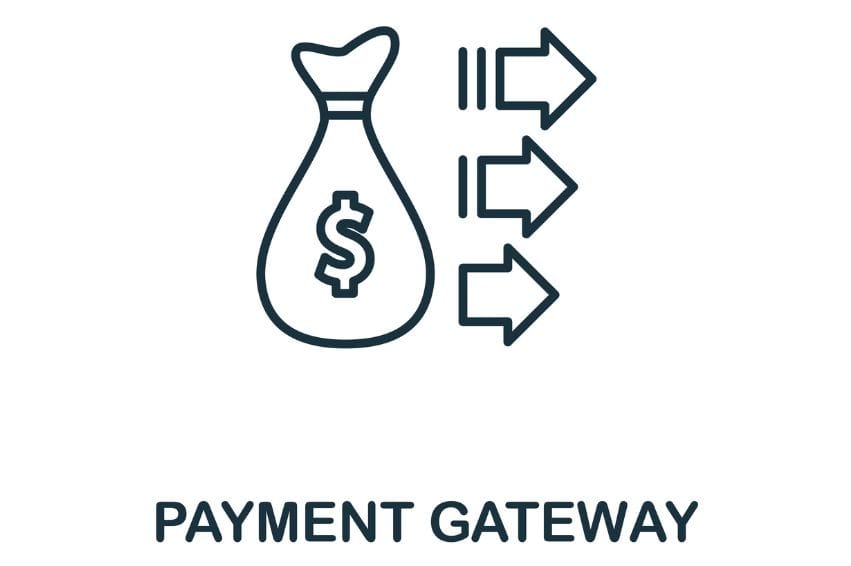
Payment gateways are technology platforms that allow any online business or brick-and-mortar shop to accept cashless payments from their clients or customers. These businesses or merchants can range from ecommerce businesses to Software-as-a-Service (SaaS) companies.
With payment gateways, merchants can offer several payment options to their customers, such as debit and credit cards, digital wallets, Unified Payments Interface (UPI) systems through bank transactions using their mobile phones, quick response (QR) codes, cryptocurrency, and more.
Payment gateways act as intermediaries for electronic financial transactions. They enable in-person and online businesses to accept, process, and manage various payment methods securely and efficiently. They connect to customers’ bank accounts and provide approval or decline information for payments based on pre-set parameters.
How Does a Payment Gateway Work in Ecommerce?
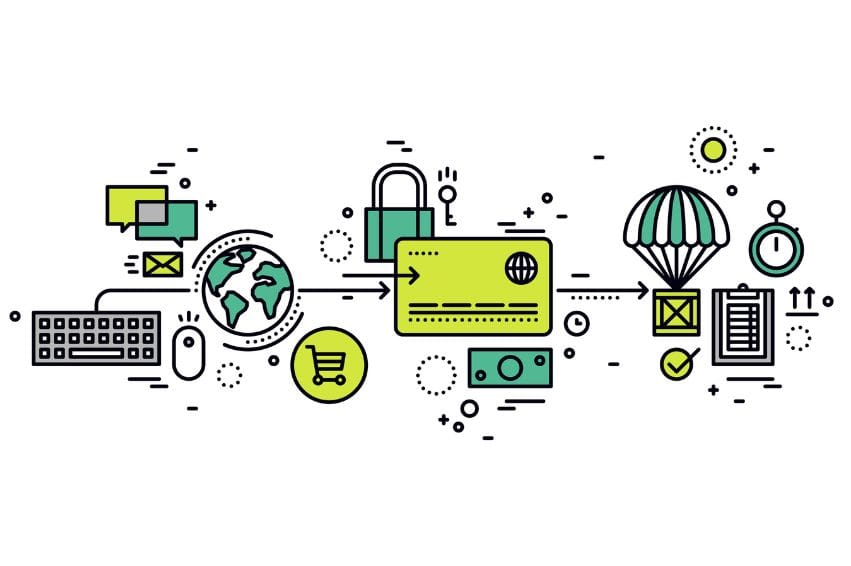
A payment gateway lets a merchant collect financially relevant customer information, such as credit or debit card details, then securely validates, authorizes, and sends payment information to the customer’s bank in real-time, which then processes it.
Basically, there are five steps involved:
- A customer places an order at a merchant’s website and decides to pay via any online payment method available among the merchant’s payment options.
- The web browser encrypts the customer’s payment data to be sent between it and the merchant’s web server using Secure Socket Layer (SSL) encryption.
- The payment gateway forwards the transaction information to the merchant’s acquiring bank or the payment processor used by the merchant’s acquiring bank.
- The transaction information is further forwarded to the customer’s issuing bank for transaction authorization.
- The customer’s issuing bank’s response is forwarded to the payment gateway, which transmits the authorization (or decline information) to the merchant’s website to process (or stop) the payment to complete the transaction.
Payment gateways’ infrastructure differs. They depend on whether they are in-store gateways or an online payment portal.
In-store payment gateways use a point-of-sale (POS) terminal that electronically connects to the network of payment processors using a phone line or internet connection. Online payment gateways require an application programming interface (API) that allows the merchant’s website to communicate with the payment processing network.
Payment gateway technologies continue to evolve as consumer tastes and technical capabilities also evolve.
For example, in the past, POS terminals would accept credit cards using magnetic strips and require signatures on paper from the customer. Today, customers don’t have to physically sign anymore. They can just use their personal identification number (PIN), which is directly entered into the payment gateway’s hardware and validated by the Luhn algorithm.
Also, contactless purchases are now available. Customers can use their mobile phones as payment devices instead of plastic credit cards.
As a merchant, you can access payment gateway systems through an acquiring bank such as Bank of America (BAC) and JPMorgan Chase (JPM), or you can use your own payment gateway system through other providers. Just make sure that the e-commerce payment gateway you choose is as compatible with your merchant-acquiring bank that is used for payment processing.
For example, Block Inc.’s Square Reader lets merchants easily accept payments at improvised locations such as conferences and conventions, farmers’ markets, and roaming stores like food trucks.
With the Square Reader payment gateway technology, a merchant attaches a tiny piece of hardware to their mobile phone. This hardware allows customers to swipe their payment card for processing through the merchant’s mobile phone’s electronic connection. The Square Reader then sends the customer’s payment information to their acquiring bank, which processes the information for payment.
New customers need to drive the versatility and speed of payment gateways. Lately, blockchain startups such as BitPay and Coinbase Commerce have introduced payment gateways for cryptocurrencies. Cryptocurrency payment gateways allow merchants to accept digital payments and immediately receive fiat currency or government-issued money in exchange.
How are Payment Gateways, Payment Processors, and Payment Methods Different?

Payment gateways act as terminals for card validation and fraud prevention. They authorize online payments through different payment methods by collecting, encrypting, and verifying customer information. They then approve or decline transactions.
They are best suited for ecommerce stores and card-not-present (CNP) transactions. Many payment gateway providers also offer payment processing services, so oftentimes, the terms “gateway” and “processor” are used interchangeably.
However, payment processors are different from payment providers, although they can work in tandem. While payment gateways communicate the status of transactions, payment processors facilitate the actual payments.
A payment processor gets to work after a payment gateway authorizes a transaction. Payment processors take care of fund transfers by communicating between the cardholder or consumer, the merchant, the consumer’s issuing bank, and the merchant’s acquiring bank.
Payment processors are best suited for POS and in-person transactions.
Payment methods, on the other hand, are the various ways by which payments can be made, such as credit cards, debit cards, automated clearing house (ACH) transactions for electronic fund transfers (EFTs), e-wallet transactions, and bitcoin and other cryptocurrency transactions.
As a merchant, if you want to accept payments online, you’d need both a payment gateway and a payment processor. However, if you only intend to process credit card and debit card transactions through your in-store or POS system, you can forego the payment gateway. If you intend to offer your customers several payment methods other than just credit card and debit card transactions using virtual terminals accessed through your computer, you require a payment gateway.
A payment gateway makes the best sense if:
- You have an online store or are setting up one;
- You intend to collect payments over the phone or through your website where a physical card is not present; and
- You want to collect in-person payments without having to invest in a full POS system.
Is PayPal a Payment Gateway?
PayPal can be both a payment gateway through its PayFlow Gateway and a payment processor through its PayPal Commerce Platform. If you already have your own payment processor, you can just use PayFlow as a gateway. If you’d like both payment gateway and payment processing services, you can use the PayPal Commerce Platform.
Is Magento a Payment Processor?
Magento is an ecommerce platform with integrated payment gateways. Its top seven payment gateways are PayPal, Stripe, Braintree, Authorize.net, Amazon Pay, 2Checkout, and Square.
What Payment Gateway Does Shopify Use?
Shopify is integrated with over 100 payment gateways all over the world, aside from its own built-in Shopify Payments. PayPal is considered its most popular payment gateway, with over 311 billion transactions as of the end of the second quarter of 2021.
What Are the Different Types of Payment Gateways?
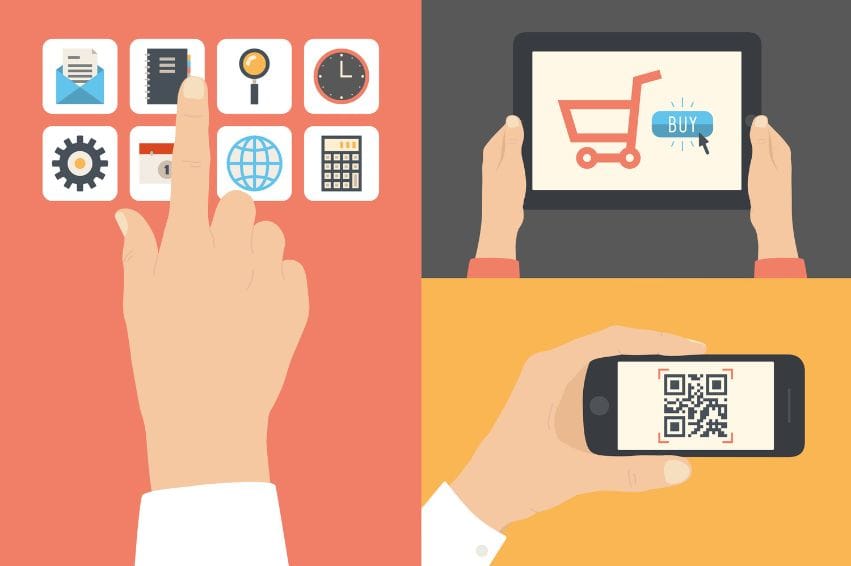
There are four main types of payment gateways: self-hosted, hosted, API-hosted, and local bank integration.
- Self-hosted payment gateway
Self-hosted– or pro-hosted—payment gateways are hosted on the merchant’s website itself, enabling the merchant to control and optimize customers’ payment experience.
Payments are made on-site, which involves the customer providing their bank or card details on the merchant’s website, in a specific format set by the merchant’s payment gateway.
After submission, the customer’s data is transmitted to the payment gateway’s uniform resource locator (URL) or web address for validation and authorization to process the payment.
Once processed, the customer receives their order and payment confirmation message from the merchant’s website itself.
Typically, large-scale businesses with high sales volume use this type of payment gateway. On-site payments are handled on their own servers, and the checkout and payment processing experience of customers all work through this system.
This results in a faster checkout process, as the entire transaction is completed solely on the merchant’s site. The merchant doesn’t have access to a full technical support team’s service, though, as it would in a hosted payment gateway.
Examples of self-hosted payment gateways are Shopify Payments and Stripe.
- Hosted payment gateway
With hosted payment gateways, when a customer clicks the “buy” button on a merchant’s website, the system redirects the customer to the payment service provider’s (PSP’s)website.
Here, the customer provides the relevant bank or card information. Once the information is confirmed and payment is authorized, the customer returns to the merchant’s website to receive their order and payment confirmation message.
Small- to medium-scale businesses often use hosted payment gateways to integrate the convenience and security of a larger platform they don’t have to build and manage themselves.
Hosted payment gateways are easy to set up and use, although they also mean less control of the customer’s checkout and payment experience and a further step for the customers to go through compared to the self-hosted payment gateway.
Hosted payment gateways typically offer a high level of security with Payment Card Industry Data Security Standard (PCI DSS) compliance and fraud protection.
A popular hosted payment gateway example is PayPal’s PayFlow Gateway.
- API-hosted payment gateway
With API-hosted payment gateways, the customer directly inputs their bank or card details on the merchant’s website, too. But, instead of directing the customer to the gateway’s URL page, the payments are made through APIs or hypertext transfer protocol secure (HTTPS) queries.
Like self-hosted payment gateways, merchants also have complete control over the whole purchase and payment process. However, to use this facility, merchants must have Secure Sockets Layer (SSL) certification and PCI DSS compliance.
API-hosted payment gateways are best for merchants who want full control of their website design, with a fully customizable checkout experience for their customers, which can be integrated with various setups such as mobile devices. The merchant is also fully responsible for security, though, so they need to invest extra for certification and compliance.
Razorpay is a good example of an API-hosted payment gateway.
- Local bank integration payment gateway
Local bank integration gateways are payment processing solutions that let businesses integrate with local banks to facilitate the online payments they receive. These ensure region-specific and seamless transaction processing.
When a customer initiates a payment, the local bank integration gateway routes the payment data to the particular local bank concerned, which then processes the payment and returns the result to the merchant’s business.
Local bank integration gateways involve a merchant’s website or app, the local bank integration gateway software, and connections to local banks.
For customers in specific regions, local bank integration gateways provide a sense of trustworthiness as they provide payment options customers are familiar with. This can increase conversion rates for businesses operating in these locales and using these local bank integration gateways.
However, integrating into these local banks can be complex, requiring high technical skills to integrate into the banks’ APIs unless this service is provided by the participating banks themselves. Local bank integration gateways are also limited only to certain participating banks. In addition, the banks’ responsiveness determines the speed of payment collection, which can sometimes be very slow with complex reconciliation procedures. These can frustrate both you and your customers.
Also, local bank integration gateways offer only basic features, not allowing for returns or recurring payments. So, they are not ideal for wholesalers or for businesses with fast-growing sales volumes.
Local bank integration gateways are essentially entry-level solutions. They are recommended for solopreneurs or small businesses with a simple, one-time payment structure and a business volume that isn’t expected to grow fast.
Although they are simple and easy to set up and implement, they are not fit for businesses that intend to scale fast, and definitely not for wholesalers.
Which Type of Payment Gateway is the Most Popular?
All over the world, hosted payment gateways and API-hosted payment gateways are the most regularly used payment gateways.
These offer merchant businesses the most tools and capabilities for accepting and receiving online payments, so businesses can focus on their growth instead of handling payments.
These are also secure and affordable, ensuring safe and smooth payment experiences for merchant businesses’ customers.
Ecommerce Payment Gateways: Pros and Cons
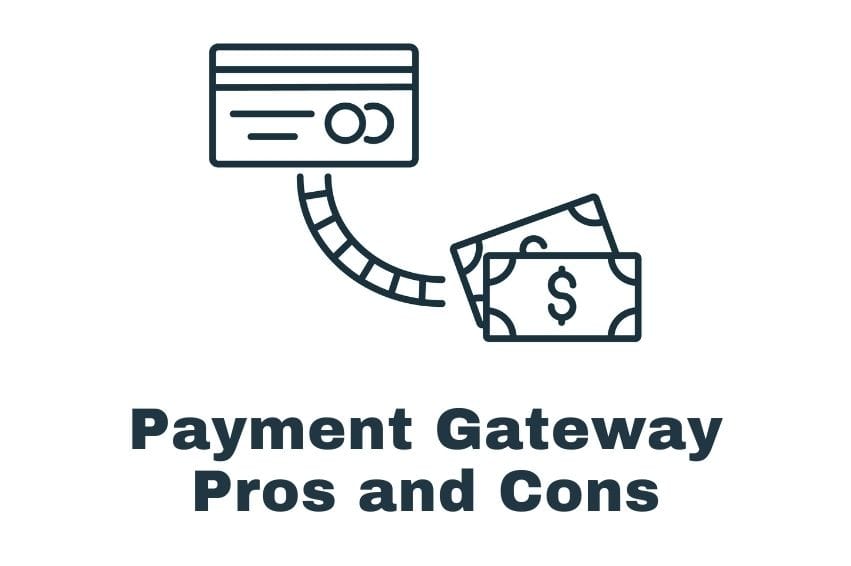
When considering adding an e-commerce payment gateway to your business, it is important to understand its benefits, as well as its limitations, so you are going to know what to expect.
Here are the typical benefits you will enjoy and the common limitations of ecommerce payment gateways:
Pros
- Secure Transactions
Since they use advanced encryption technologies to secure the sensitive personal and financial information of customers, they protect both consumers and the merchant businesses using them from fraud.
- Wider customer reach
With the capability to process digital payments from anyone, anywhere in the world, businesses have the potential to reach a broader global audience.
- Enhanced customer experience
With smooth and swift processing of transactions, e-commerce payment gateways enhance customers’ user experience, encouraging them to buy more often from your business.
Cons
- Set-up Costs
Setting up a payment gateway will involve setup fees, monthly fees, transaction fees, and cancellation fees. Some payment gateways may require merchant businesses to organize their own PCI compliance. Integration with some platforms may not be possible due to compatibility issues.
- Technical Glitches
Payment gateway network downtime and other technical issues beyond the merchant business’ control can lead to poor customer experience and lost sales.
- Security Threats
Even with advanced security measures, payment gateways are one of the main targets of cybercriminals, who go for businesses with valuable data. Since payment gateways handle sensitive personal and financial information of businesses and their customers, they are likely on the top hit list. Small and medium businesses (SMBs), too, with fewer cybersecurity measures than larger ones, may also be targets of cyberattacks.
How Do You Choose the Best Ecommerce Payment Gateway for Your Business?
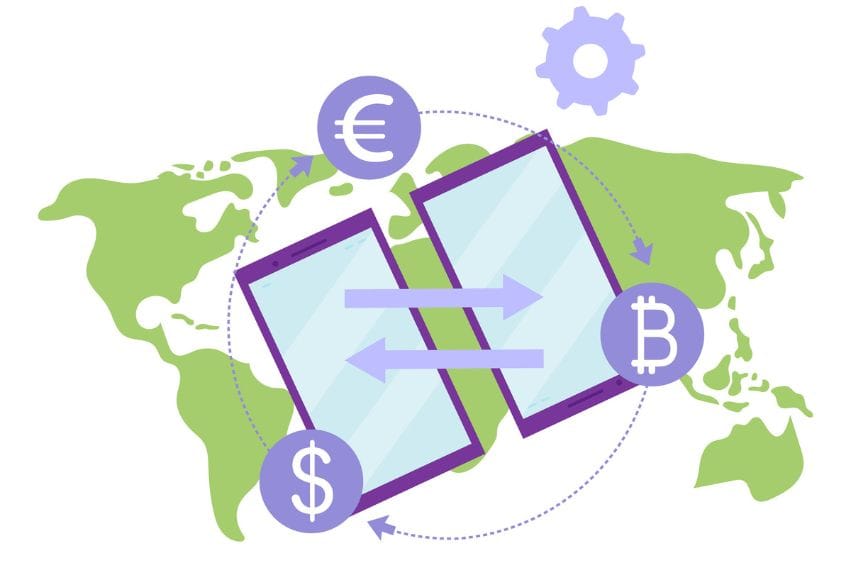
A reliable, secure, and fast payment gateway is critical for merchant businesses to provide a smooth customer payment experience to their users and boost sales at their on-site and online stores.
Choosing the best e-commerce payment gateway for your business involves using essential criteria for good payment gateways to evaluate your options and asking yourself a set of questions to guide you in your choice.
Criteria
To maximize the benefits of ecommerce payment gateways, look for these nine key features in coming up with the shortlist of payment gateways you will choose from:
- Brand Trust
In the world of online payments, brand trust is key. Customers need to feel secure when providing their personal and financial information via the internet.
Begin your shortlist of ecommerce payment gateways to consider by adding only reputable payment gateways with a strong track record. Established brands already have a well-documented history of reliability and security, which can lead to increased trust and conversions among your customers.
- Security
To ensure secure encryption, you will only want to work with PCI-compliant ecommerce payment gateway companies. PCI-compliant companies adhere to the Payment Card Industry Data Security Standard (PCI DDS), which is a set of standards for providing and maintaining data security in the electronic world.
- Compatibility and Integrations
Will the payment gateway easily integrate with your existing technology? Make sure that the payment gateway you are considering integrates seamlessly with your ecommerce platform’s software, website, and mobile app.
Consider only payment gateways that offer well-documented APIs and plugins for popular e-commerce platforms. An uncomplicated integration process saves you time and resources in development.
Comprehensive documentation is key to a smooth integration process. Look for ecommerce payment gateways that provide well-documented APIs, software development kits (SDKs), and other essential developer resources.
No matter how secure, user-friendly, and fast the e-commerce payment platform you are considering is, if it’s not compatible with your technology or won’t integrate smoothly with your software, you can’t use it.
- Speed
To provide good customer service, merchant businesses’ speed in completing the entire sales process is key. With ecommerce payment gateways, this includes the smooth and speedy transfer of funds from the customer’s account to the merchant’s account.
The end-to-end processing of payment gateways involves authorization, clearing, fund transfer, and reconciliation. Fund transfers are typically processed within 2 to 3 business days.
- User Friendliness
The ecommerce payment gateway you are considering should be able to provide a seamless onboarding process for your business and your customers.
It should offer you a straightforward merchant account set-up process so you can promptly start processing online payments.
For your customers, the payment process should be secure, easy to use, and trust-inspiring so they will want to come back to your store for more purchases in the future.
- Multiple Payment Methods
The ecommerce payment gateway you are considering must support multiple payment methods, including the major credit and debit cards, PayPal Payments, and contactless payments such as Apple Pay and Google Pay.
If your online business serves – or intends to serve – a global audience, you would need to consider a payment gateway that handles multicurrency and international payments seamlessly.
- Scalability
Make sure the payment gateway you choose can scale with your ecommerce business. It should be able to handle increased transaction volumes and provide additional features such as advanced integration options and multicurrency support as your business grows.
- Customer Support
Customer support should be robust: not only available for you 24/7 as much as possible, but promptly addresses your concerns and challenges as you need them.
A well-documented knowledge base and strong developer support are essential. These can also save your developer team valuable time when troubleshooting technical issues and customizing payment flows.
Of course, you will only find this out when you become their client, which is a huge risk to take going in blind. The next best thing to do is to thoroughly interview them and study their documentation of customer support before you even become their client.
Also, in general, check out the user reviews of the payment gateway providers you are considering before adding them to your shortlist.
- Pricing
Cheaper doesn’t necessarily mean better. If a payment gateway’s lower costs are offset by the additional costs you have to spend for more security and fraud detection capabilities, then it’s not worth the consideration.
Consider your business’ transaction volume and average transaction value when assessing each payment gateway provider’s pricing. Look at the corresponding itemized fees, such as set-up fees, monthly fees, per-transaction charges, and any hidden fees that will impact your overall costs. Make sure they align with your budget and revenue expectations.
Questions
What payments do your customers already use?
Before even deciding on which ecommerce payment gateways to consider for your business, ask yourself this fundamental question: what are your customers already using to handle their online payments?
This will guide you in coming up with a shortlist of ecommerce payment gateways to consider. You don’t have to wade through studying all the hundreds of payment gateways available out there.
Later on, you might also decide to stack your payment gateways to facilitate different payment types your customers can use. This gives your customers more options. You’ll also encounter fewer problems and potential security risks, not being dependent on only one ecommerce payment gateway.
How is the ecommerce payment gateway’s mobile performance?
Check the ecommerce payment gateway’s mobile performance, not just their website performance.
Worldwide, more than half (60%) of buyers now use their mobile devices and the internet to shop online. In the United States alone, three-fourths of adults use their smartphones to buy online, with 87% to 92% among shoppers aged 18-29 and 30-49, respectively.
How fast and customizable is the ecommerce payment gateway’s settlement cycle?
Compare the ecommerce payment gateways you are considering in terms of their payment settlement cycles.
How quickly do they facilitate settlements so you can receive your funds quickly and improve your cash flow?
Do they offer customizable settlement cycles, where merchants can choose a frequency cycle that best suits their business needs? This helps you manage your cash flow and financial planning.
How comprehensive is the payment gateway’s reporting?
Trustworthy payment gateways provide merchants with very detailed reports and analytics. This enables merchants to monitor their transactions, settlements, and overall business performance more effectively. Merchants can make more data-driven decisions, optimize payment processes, and identify potential areas of improvement and growth in their business when they have these detailed reports and analytics.
Which payment gateway is best for ecommerce?
So, after understanding better what ecommerce payment gateways are, how they work, and what to look for in choosing one for your business, here is our payment gateway list of the top 10 recommended gateways in the world, arranged alphabetically:
- Adyen
Built for both POS and online purchases, Adyen accepts a wide range of payments, from major credit cards to payment providers such as Apple Pay.
Focusing on mobile payments, it also provides real-time analytics to provide prompt insights into your consumers’ behavior. Each transaction’s security is boosted by Adyen’s dynamic card validation technology.
Adyen can handle large volumes of transactions at any one time. It has partnered with brands such as LinkedIn, Microsoft, and Uber.
- Amazon Pay
Several small and medium businesses have made it big using Amazon Pay. In the United States alone, 1.2 million merchant websites use Amazon Pay as a payment solution. In the United Kingdom, 95,596; Australia, 78,763. Here is the complete list of merchants using Amazon Pay in various countries and territories.
Amazon Pay is also relatively customizable, with plugins available, including some for use in Amazon’s Big Commerce – its platform for enterprise-scale ecommerce businesses.
- Apple Pay
Targeted at a mobile payment structure, Apple Pay enables merchants to handle payments using Face ID or Touch ID. Apple Pay is primarily aimed at consumers who want to maintain an electronic wallet to manage their payments.
More than 1 billion users now use iPhone worldwide, with 507 million using Apple Pay. This presents a huge opportunity for merchants whose target consumers are similar to the iPhone user profile: younger, higher income, with more in-app spending.
Among merchants, Apple Pay is used by over 85 percent of retailers in the United States.
- Authorize.net
Authorize.net is one of the oldest payment gateways in the world, serving more than 44,500 merchants across 33 countries and handling more than $149 billion worth of transactions every year.
Authorize.net accepts payments from American Express, Apple Pay, Discover, eCheck, JCB, Mastercard, PayPal, and Visa.
- Payflow Gateway
PayPal’s Payflow Gateway is a secure and open payment gateway that lets merchants accept credit card and debit card payments, PayPal, and PayPal Credit with authorizations, captures, and credit voids.
Payflow Gateway merchants can choose to process their online store payments with any major payment processor, bank, or card association. Merchants who want total control over their customers’ checkout experience can host their own checkout pages and then send transactions to PayPal using the open gateway API. They can also decide to have PayPal host their checkout pages and manage security for sales and authorizations.
PayPal Payments Pro uses Payflow Gateway and its API internally, providing the same features to merchants. PayPal Payments Pro merchants use PayPal as their credit card processor.
- Skrill
Focusing on low-cost international transactions, Skrill is most suitable for businesses that accept payments in multiple currencies.
Skrill also offers services for instant deposits and payouts, which benefit retailers who need to keep close control of their cash flows.
Skrill offers the right important capabilities for e-commerce businesses – from one place to manage all your funds to multi-currency support to fraud protection to providing a great user experience for both you and your customers.
- Shopify Payments
Best for merchants with Shopify stores, Shopify Payments is an all-in-one native e-commerce payments gateway as well as a complete e-commerce solution.
Easy to set up and use, it integrates with the Shopify e-commerce platform and consolidates order management, payment processing, and data analytics into one seamless payment gateway system.
Using this native payment solution, Shopify merchants save time and stress from configuring and integrating a third-party payment platform. They can focus on selling their products instead and building their business without having to worry about the technical stuff.
- Square
Both a payment gateway provider and credit card processor, Skrill’s payment solutions are geared more toward small businesses that need a credit card processing method for in-person transactions. It also provides hardware options for brick-and-mortar merchants for in-person transactions.
Square also has built-in inventory management features, such as real-time stock tracking, low stock alerts, and detailed sales reporting.
- Stripe
Stripe is a payment gateway provider best suited for ecommerce, SaaS, non-profits, platform-based payments, and subscription businesses and marketplaces. It is very flexible with lots of features, including a large ecosystem of plugins and integrations.
Although it’s a bit more complicated to set up, once your online store is ready to go, you can go deep into what’s happening with your payments. You can see reports on sales volume, frauds and disputes, spend-per-customer, and high-risk payments on the home dashboard alone. If you want to go even deeper, you can go to the Reports section and explore more options.
Stripe is also equipped with a machine-learning anti-fraud system, Radar, that adapts to merchant businesses’ needs, adding an extra layer of security for them.
It can handle a large volume of transactions from companies like ride-share Lyft, which has a mobile fleet of more than 700,000 drivers.
- 2Checkout (now Verifone)
A leading all-in-one monetization platform, 2Checkout (now Verifone) is a global payment gateway that lets merchants accept online and mobile payments from buyers all over the world.
It handles over 1 billion transactions annually. It integrates more than 100 online carts and systems, supports more than 100 currencies, and carries more than 30 languages.
It offers customized checkouts and account updater features and supports subscription billing, aside from the typical payment gateway features.
Choosing the Best Ecommerce Payment Platform for Your Business
Ultimately, choosing the type of payment gateway that’s best for your business depends on your business model. You have to be clear about the types of features you require, your level of comfort with website building to integrate the ecommerce payment gateway solution, and the amount of control you want over your customers’ payment experience with your business.
